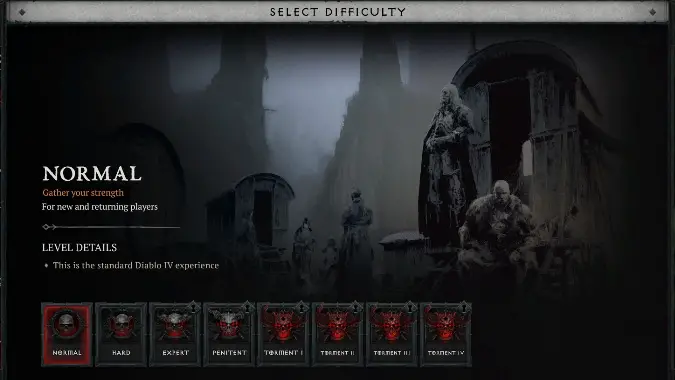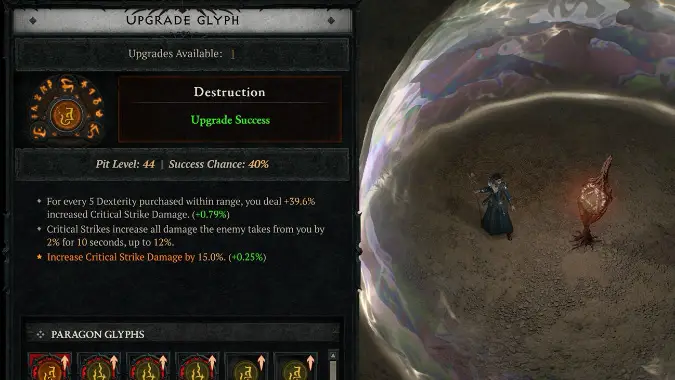What’s changing in Diablo 4 if I don’t buy Vessel of Hatred?

Though the Diablo 4: Vessel of Hatred expansion is coming out on October 7, the expansion isn’t the only thing hitting the game next week: the latest patch also includes many improvements to the base game everyone can enjoy. So even if you don’t buy the expansion (or don’t buy it immediately), Diablo 4 patch 2.0 will significantly change the game for casual and hardcore players alike.
Here’s a rundown of the major changes coming with Diablo 4 patch 2.0, even if you don’t buy the game’s first expansion.
The maximum level is now 60
The update includes major leveling changes, including a reduced level cap: maximum level will be 60, down 100. Additionally, all players will get 10 more points to spend on skills in their class trees, all of which have been revamped. Each class has gained one new active skill, and five new passive skills. One key change is that all Ultimate abilities now have five ranks available to them, so they may feel less impactful when you initially get them until they are fully powered up.
New Paragon progression system
Paragon points are no longer part of the leveling progression; instead, after hitting max level, you’ll earn Paragon points (much like in Diablo 3). Paragon rank is also shared account wide, with one key restriction: it isn’t shared between your Eternal and Seasonal characters, so you’ll have to start earning again each season you play. Normal and Hardcore Paragon progression is also earned separately.
Each class has a new Paragon board, with a cap of 300 paragon points to earn (up from 200). However players are now capped at a maximum of five paragon boards including the starting board. This means you’ll likely fill out more of your Paragon boards, allowing you to choose more rare and magic nodes on a single board than previously.
Twice as many difficulty levels
The old system of World Tiers 1 through 4 is gone, replaced by Normal, Hard, Expert, and Penitent difficulties. Normal and Hard are available immediately, Expert is unlocked after you complete the prologue, and Penitent is unlocked after you reach level 50. Capstone dungeons no longer exist: you simply need to complete these goals to unlock each difficulty.
Beyond those first four levels is a new difficulty system similar to the previous generations of Diablo, with four extra challenging Torment difficulty levels. These are unlocked based on which level of the Pit your character has cleared, so you won’t be able to immediately jump into these Torment levels.
Be aware that mob scaling has changed, and changes to classes may make leveling harder for new characters than previously. If you don’t already have the bonus skill points and potion charges from unlocking the renown levels in the original five questing zones, you may want to stay on Normal until you’ve leveled up and gained some additional skills and gear.

A new way to level Glyphs
You won’t be running Nightmare Dungeons to level Glyphs anymore: instead, you’ll improve your Glyphs in the Pit. But running The Pit doesn’t grant Glyph XP, instead it grants a number of chances to attempt to upgrade a glyph. Each successfully completed Pit run gives you three chances to upgrade a glyph — and if you complete the Pit without dying you earn a bonus chance. All attempts must be used before closing the dungeon; chances are not retained between Pit runs.
The success of the upgrade roll depends on the level of the glyph and the Pit rank. If there’s not a large difference between the Glyph rank and the Pit level, a successful roll may grant additional Glyph ranks (between 1 and 3). Attempting to level a high ranked glyph in a low level Pit will have a decreased chance of success.
Glyphs now have maximum level of 100. At rank 48 they can be upgraded from Rare (yellow) to Legendary (orange) using gem fragments. A legendary Glyph gains an additional affix and increases the radius from four to five on the Paragon board.
Huge itemization changes
Sacred items, the odd stepping stone gear between ordinary gear and Ancestral gear, no longer exist. At level 60, all Legendary items will drop at item power 750, and Ancestral items will start dropping in Torment 1. Ancestral items will always drop at item power 800, the new item power cap, and they’ll always have at least one Greater Affix. Greater Affixes will only appear on Ancestral items.
If you’re getting into high-level crafting, item power 750 items can now be Masterworked up to four times. Infernal Hordes and Whisper caches will also drop a healthy amount of crafting materials, scaling with Torment level.
Along with these itemization changes, Treasure Goblins and the Butcher are guaranteed to drop Legendary items at any level, so hopefully it will be more rewarding to encounter these rare mobs.
Nightmare Dungeons are now for farming crafting materials
Instead of being used to level Glyphs, Nightmare Dungeons will be your primary source for crafting materials. Dungeon bosses will drop a large number of common and rare crafting materials, scaling with Torment level. But all mobs can drop materials, so you’re encouraged to explore rather than just racing for the last boss.
All dungeons also have a “treasure room” somewhere in the instance, replacing the mini-events that were often found at the mid point of dungeons. Typically, a key will drop from a specific mob, or be looted randomly from a class of mob, letting you unlock the room, which will have a small pack of elites and a resplendent chest.

A Party Finder tool
Grouping will get a lot easier with the new Party Finder interface. Though you won’t be able to group with players doing Vessel of Hatred content if you haven’t bought the expansion yourself, you’ll be able to use the Party Finder to find people to play with anywhere outside of Nahantu.
Updated inventory system
There have been a number of changes to the user interface, but your inventory may be the most notable. Quest items no longer go in your bags, eliminating further clutter. Players will now have the following inventory tabs:
- Equipment: equipable items, tempering recipes, cosmetics drops, etc.
- Socketables: gems and runes.
- Consumables: potions, seething opals, whispering cache keys, boss summoning materials.
- Keys: Nightmare Dungeon Keys, Infernal Horde Keys.
Please consider supporting our Patreon!
Join the Discussion
Blizzard Watch is a safe space for all readers. By leaving comments on this site you agree to follow our commenting and community guidelines.




